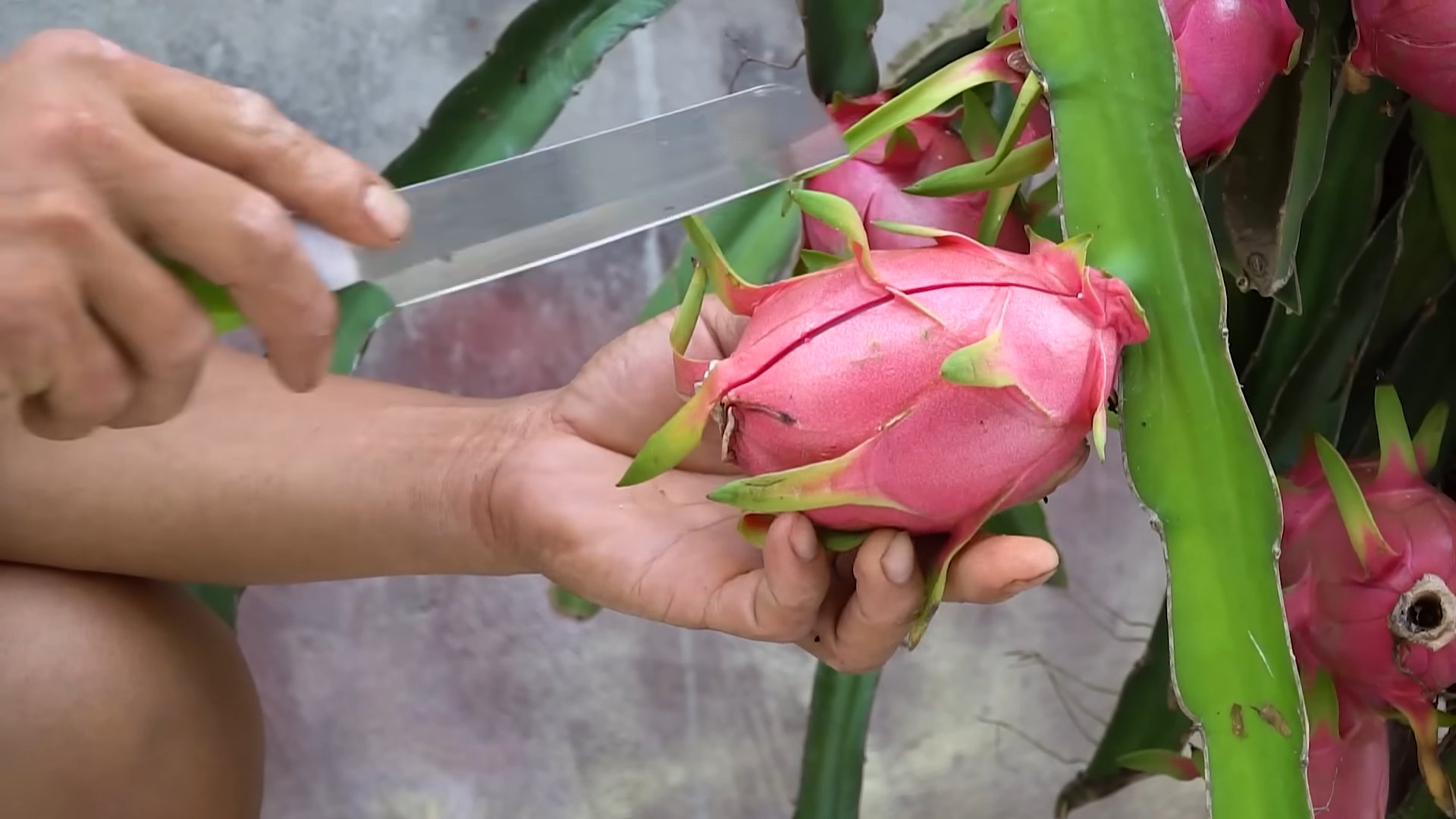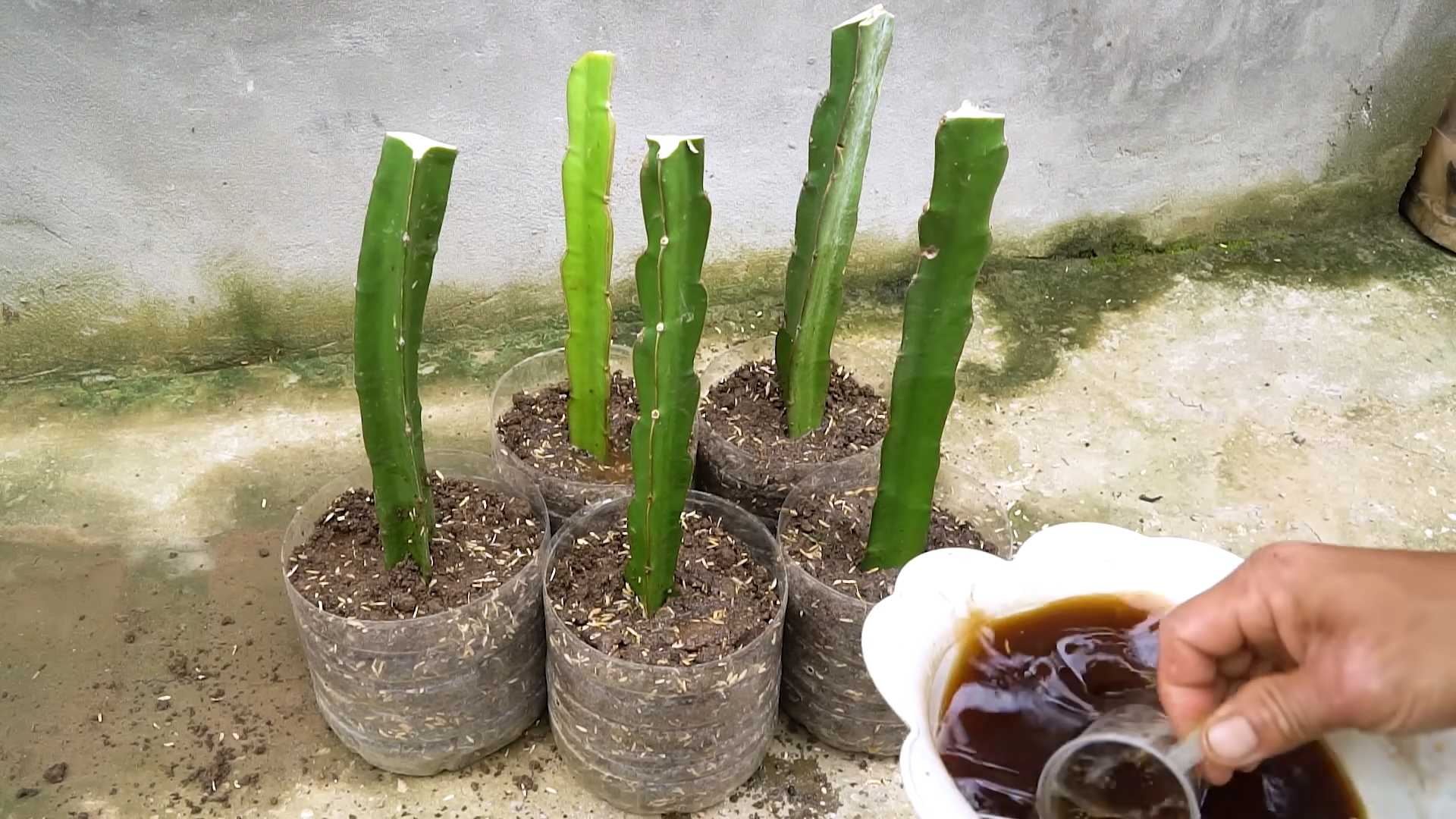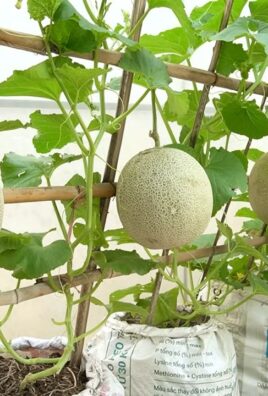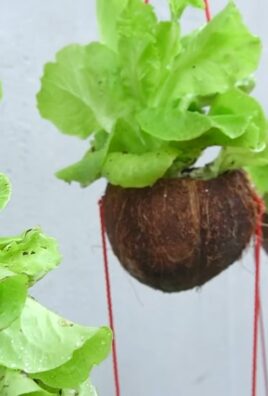Grow Dragon Fruit at Home
Have you ever dreamt of harvesting exotic, vibrant dragon fruit right from your own backyard? Well, dream no more! This article is your passport to the exciting world of growing dragon fruit at home, revealing simple yet effective Grow Dragon Fruit at Home techniques that will transform your gardening experience. For centuries, dragon fruit, with its striking appearance and subtly sweet flavor, has held a special place in various cultures, particularly across Southeast Asia and parts of Latin America. It’s not just a visually stunning fruit; it’s packed with nutrients and offers a unique culinary adventure.
But let’s be honest, the thought of cultivating such a seemingly unusual fruit can feel daunting. That’s where this guide comes in! I’ll walk you through everything you need to know, from selecting the right cuttings to mastering the art of pollination, all while keeping things simple and achievable, even for beginner gardeners. You’ll discover that growing dragon fruit at home is far easier than you might imagine, requiring minimal space and surprisingly little specialized equipment.
Why Grow Your Own Dragon Fruit?
Beyond the sheer satisfaction of nurturing a plant from cutting to harvest, growing your own dragon fruit offers several compelling advantages. You’ll enjoy the freshest, most flavorful fruit possible, free from pesticides and preservatives. Plus, imagine the conversations you’ll spark with friends and neighbors as you proudly showcase your exotic harvest! This DIY approach not only saves you money on grocery bills but also connects you more deeply with nature and the wonder of growing your own food.

Growing Dragon Fruit at Home: A Complete DIY Guide
I’ve always been fascinated by dragon fruit, those vibrant pink and sometimes yellow fruits with their unique appearance. So, I decided to take on the challenge of growing my own. It’s surprisingly easier than you might think! Here’s my step-by-step guide to help you grow your own delicious dragon fruit.
Phase 1: Preparing for Planting
- Choose your variety: Research different dragon fruit varieties. Some are more suited to certain climates than others. Consider factors like taste, color, and growing habits. I chose a red-fleshed variety known for its adaptability.
- Select your planting method: You can grow dragon fruit from cuttings or seeds. Cuttings are much faster and easier, especially for beginners. I opted for cuttings.
- Gather your materials: You’ll need:
- Healthy dragon fruit cuttings (at least 12 inches long, with several nodes)
- Well-draining potting mix (a cactus and succulent mix works well)
- Large pots (at least 15 gallons) or a suitable area in your garden
- Gardening gloves
- Sharp knife or pruning shears
- Rooting hormone (optional, but helpful)
- Watering can
- Support structure (trellis, strong stakes, or a sturdy fence)
- Prepare the cuttings: Select healthy, disease-free cuttings. Cut them at an angle just below a node (the point where leaves or branches grow). Allow the cut ends to callous over for a few days before planting. This prevents rot.
Phase 2: Planting and Initial Care
- Fill your pots: Fill your chosen pots with the well-draining potting mix. Ensure the mix is moist but not soggy.
- Plant the cuttings: Plant the calloused cuttings about 6 inches deep, burying at least two nodes. Gently firm the soil around the base.
- Water thoroughly: Water the newly planted cuttings deeply, ensuring the water reaches the roots. Don’t overwater; allow the soil to dry slightly between waterings.
- Provide support: Dragon fruit vines are vigorous growers and need support. Immediately install your chosen support structure – a trellis is ideal – near the planted cuttings. As the vines grow, gently tie them to the support.
- Placement: Choose a location that receives at least 6-8 hours of direct sunlight daily. Dragon fruit thrives in warm, sunny conditions.
- Initial watering schedule: Water regularly, but avoid overwatering, which can lead to root rot. Check the soil moisture before watering; water deeply when the top inch or two feels dry.
Phase 3: Ongoing Care and Maintenance
- Fertilizing: Dragon fruit plants are heavy feeders. Start fertilizing after a few months, using a balanced, slow-release fertilizer specifically formulated for cacti and succulents. Follow the package instructions carefully. I usually fertilize every 2-3 months during the growing season.
- Pruning: Regular pruning is essential for maintaining the plant’s shape and encouraging fruit production. Prune away any dead, damaged, or diseased branches. You can also prune to control the size and shape of the plant, keeping it manageable within your space.
- Pest and disease control: Keep an eye out for common pests like mealybugs and scale insects. Treat infestations promptly with insecticidal soap or neem oil. Good air circulation can help prevent fungal diseases.
- Watering adjustments: Adjust your watering schedule based on the season and weather conditions. Water more frequently during hot, dry periods and less frequently during cooler, wetter months. Always allow the soil to dry slightly between waterings to avoid root rot.
- Training the vines: As the vines grow, continue to train them along the support structure. This helps maximize sunlight exposure and fruit production. Gently tie the vines to the trellis or stakes as needed.
- Monitoring growth: Regularly inspect your plants for any signs of stress, disease, or pest infestations. Address any issues promptly to maintain the health of your plants.
Phase 4: Harvesting and Enjoying Your Dragon Fruit
- Flowering and fruiting: Dragon fruit plants typically flower at night. The flowers are large and beautiful, and they will eventually develop into the fruits. Pollination is often done by nocturnal insects, but you can hand-pollinate if necessary.
- Harvesting: Dragon fruit is ready for harvest when the skin turns its characteristic color (usually bright pink or yellow, depending on the variety) and the fruit feels slightly soft to the touch. Gently twist the fruit to detach it from the vine.
- Storage: Store harvested dragon fruit in the refrigerator for up to a week. You can also cut it up and freeze it for later use.
- Enjoying your harvest: Enjoy the fruits of your labor! Dragon fruit can be eaten fresh, added to smoothies, or used in various recipes. Its unique flavor and texture make it a delightful addition to many dishes.
Tips for Success:
- Patience is key: It may take several months or even a year or more before your dragon fruit plant produces its first fruits. Don’t get discouraged!
- Observe your plants: Pay close attention to your plants and adjust your care accordingly. Each plant is unique and may have slightly different needs.
- Research your climate: Understand your local climate and choose a dragon fruit variety that is well-suited to your growing conditions.
Troubleshooting:
If you encounter problems, such as yellowing leaves or stunted growth, research potential causes and solutions online or consult with local gardening experts.

Conclusion
Growing dragon fruit at home might seem daunting, but this DIY method proves it’s surprisingly achievable and incredibly rewarding. You’ll not only enjoy the delicious, vibrant fruit straight from your garden, but you’ll also experience the satisfaction of nurturing a plant from cutting to harvest. This simple, yet effective, technique bypasses the complexities and high costs often associated with purchasing established plants. The ease of propagation, coupled with the relatively low maintenance requirements, makes this DIY dragon fruit growing method a must-try for both seasoned gardeners and enthusiastic beginners alike. Imagine the pride of presenting your homegrown, exotic fruit to friends and family – a testament to your green thumb and a delicious conversation starter. Beyond the simple satisfaction, you’ll also be contributing to a more sustainable lifestyle by growing your own food.
This DIY approach offers incredible flexibility. You can experiment with different varieties of dragon fruit, each boasting unique flavor profiles and colors. Consider exploring the vibrant red-fleshed Hylocereus undatus, the sweet white-fleshed Hylocereus costaricensis, or even the yellow-fleshed varieties for a truly diverse harvest. Furthermore, you can adapt the growing environment to suit your available space. Whether you have a sprawling backyard or a sunny balcony, this method can be adjusted to thrive in various settings. For those with limited space, consider vertical gardening techniques, using trellises or hanging baskets to maximize your yield. Remember to monitor your plant’s growth and adjust your watering and fertilization accordingly. With a little patience and care, you’ll be harvesting your own delicious dragon fruit in no time. Don’t be afraid to experiment – the beauty of this DIY method lies in its adaptability.
We strongly encourage you to embark on this exciting journey of growing dragon fruit at home. Share your experiences, successes, and even your challenges with us and the wider gardening community. Post pictures of your thriving plants and delicious harvests on social media using #DIYDragonFruit or #HomegrownDragonFruit. Let’s create a vibrant online community of dragon fruit enthusiasts, sharing tips, tricks, and the joy of harvesting this unique and delicious fruit. Your success story could inspire others to embark on their own dragon fruit growing adventure. Remember, the most rewarding part of gardening is the journey itself, and growing your own dragon fruit is a journey filled with delicious surprises. So, grab a cutting, follow our simple steps, and get ready to experience the magic of homegrown dragon fruit!
Frequently Asked Questions
Can I grow dragon fruit from seed?
While possible, growing dragon fruit from seed is significantly more challenging and time-consuming than propagation from cuttings. Seeds often take much longer to germinate and mature, and the resulting plants may not always exhibit the same characteristics as the parent plant. Using cuttings guarantees a faster and more reliable outcome, replicating the parent plant’s traits.
What type of soil is best for growing dragon fruit?
Dragon fruit thrives in well-draining soil that is slightly acidic to neutral (pH 6.0-7.0). A cactus potting mix or a blend of regular potting soil, perlite, and coarse sand works well. Ensure the soil doesn’t retain excessive moisture, as this can lead to root rot.
How much sunlight does a dragon fruit plant need?
Dragon fruit plants are sun-worshippers and require at least 6-8 hours of direct sunlight daily to flourish. Choose a location in your garden or on your balcony that receives ample sunlight throughout the day. Insufficient sunlight can lead to poor growth and reduced fruit production.
How often should I water my dragon fruit plant?
Watering frequency depends on the climate and soil conditions. Generally, allow the soil to dry out slightly between waterings. Overwatering is more harmful than underwatering, so it’s better to err on the side of caution. During the hotter months, you may need to water more frequently, while less frequent watering is needed during cooler periods.
When can I expect to harvest my dragon fruit?
The time it takes to harvest your first dragon fruit depends on several factors, including the variety of dragon fruit, the growing conditions, and the health of the plant. However, you can generally expect your first harvest within 12-18 months of planting a cutting. Once the fruit turns a deep pink or red (depending on the variety) and the skin feels slightly soft, it’s ready to harvest.
What are the common problems encountered when growing dragon fruit?
Common problems include pests like mealybugs and scale insects, fungal diseases, and nutrient deficiencies. Regularly inspect your plant for signs of pests or diseases and address any issues promptly. Providing adequate nutrients through fertilization will help prevent nutrient deficiencies.
Can I grow dragon fruit indoors?
While dragon fruit prefers outdoor growing conditions, you can grow it indoors with sufficient sunlight. A south-facing window or a grow light can provide the necessary light. However, indoor-grown plants may not produce as much fruit as those grown outdoors.
What are the benefits of growing my own dragon fruit?
Growing your own dragon fruit offers numerous benefits, including the ability to enjoy fresh, delicious fruit without pesticides or preservatives, the satisfaction of nurturing a plant from cutting to harvest, and the opportunity to experiment with different varieties. It’s also a sustainable way to enjoy this exotic fruit.




Leave a Comment